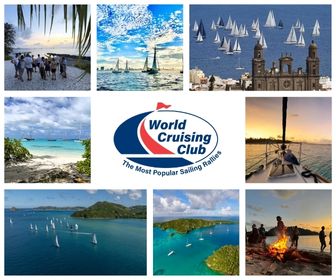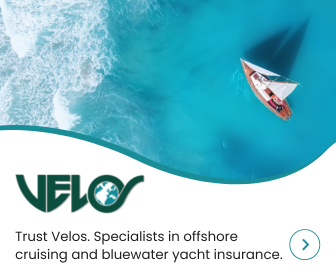Useful Tips on Cruising Norway
Published 22 years ago, updated 7 years ago
I have a couple of comments on your entry for Norway.
You wrote:
The majestic fjords are less suited for cruising as the anchorages are extremely deep and the winds alternate between flat calms and violent gusts blowing almost vertically down the sides of the sheer cliffs.
In most cases, the wind blows along the fjord in one direction or the other. I’ve had cases where I could sail into the bottom of the fjord and then sail out again the next day and I have had cases where I’ve motored with a stiff breeze on the nose in both directions. The only place I have experienced dangerous katebatic winds was on my first visit to the Trollfjord in the late autumn of 2000. I didn’t have any canvas up at the time, so it wasn’t a problem, but I changed my mind about spending the night in the fjord.
Mostly, the fjords have been flat calm when I was there, so if a cruiser is willing to rely on the engine, there is no reason not to cruise the fjords and many very good reasons to do so. The katebatic winds are only dangerous if you have sailed up.
As you note, good anchorages are few and far between in the fjords, but if you plan ahead, it is often possible to find a quay or pontoon to tie up to. As an example, the quay at the end of the Lysefjord can be dangerous in a strong westerly. However, there’s an excellent anchorage near the mouth of the fjord (mentioned in the Norwegian Cruising Guide) and it’s perfectly feasible to make a day trip to the fjord, stop for dinner at the quay at the bottom if the wind is right and return to the anchorage for the night.
Although the number of cruising boats visiting the northern part of Norway is still small, mainly because of the short sailing season and unreliable weather, there has been a marked increase in the number of yachts attracted to cold water cruising.
As you say, the sailing season is short, particularly in the north, but summer weather is usually quite warm, typically above 15°C even in the far north, and weeks on end of temperatures around 20°C are not unusual. In 2002, I left Norway in a heatwave of constant 27 – 29°C days and arrived in a very chilly Shetland at only 14°C.
You have managed to list some of the most expensive places to stop in Norway. There are good chandleries and sailmakers many other places in the south and south-east, particularly in Tønsberg which is a vibrant city with a lot going on in the summer and where you can practically tie your boat up to any one of several outdoor restaurants or go to the guest harbour a bit further west for peace. The guest harbour can get a bit uncomfortable, but not dangerous in a strong SW. Avoid the outside of the pontoons if possible. Good anchorages abound in this area as they go along most of the Norwegian coast except for in the fjords.
Visibility on most days can be poor, with low mist.
I would strongly disagree with this statement. I think it should be corrected to: “Visibility can sometimes be poor”
In two seasons of cruising north of the Arctic Circle, I only had three days of bad visibility whilst I was underway. The first was in a snowstorm at Easter of 2001, the second was on passage from Loppa to Sørøya when I had three or four-mile visibility and the third was in a real peasouper in Gisundet on passage from Tromsø to Finnsnes. There were also a couple of days of fog where I prudently stayed in port. I can’t really say that I had more fog in northern Norway than any other cruising destination. I certainly had more for this year in Galicia, Spain than I’ve had in my 12 years of cruising in Norway put together.
Yachts must stay in the sailing lanes marked on the charts.
This is completely new to me. I have never heard of anyone being restricted in where to sail in Norway except for the military areas which are few and far between. However, it’s prudent to keep to the marked lanes if you’re unfamiliar with navigating in Norwegian waters which requires an alert navigator and the chart at hand in the cockpit.
I would not go anywhere in Norway without the excellent Norwegian 1:50000 charts. Unfortunately, this can be a major expense, as around 100 charts are required if you intend to sail the coast from the Swedish border to North Cape and a dozen more if you want to go all the way to the Russian border. However, the buoyage changes very little from year to year and with constant daylight in summer there is nothing wrong with using second hand or borrowed charts. Yachts with tall masts should keep a lookout for new bridges on the west coast though. Most of the new bridges are 16m or higher.
Sailing close to military areas is prohibited, such areas being marked on charts and usually indicated by signposts on the shore.
There are very few such areas, and most of them are in places where a yacht would not want to go anyway.
The shoreline in anchorages is normally privately owned and one should ask the owner’s permission first before landing.
Whilst one should certainly not land in someone’s front yard or use a private quay without asking permission, Norwegian law actually guarantees your right to land or even camp just about anywhere you like as long as it isn’t cultivated land or pastures.
Owen Morgan, Yacht Naomi J.
Related to following destinations: Norway, The Skagerrak (South & East coasts), Tonsberg, Tromso, West Coast (north of Lat.64)





